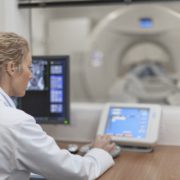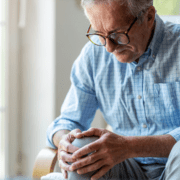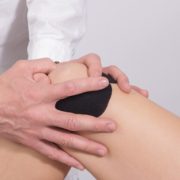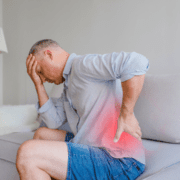Six Tips for Managing Knee Pain without Medication
6 Natural Ways to Manage Knee Pain Without Medication or Surgery
When you’re suffering from lingering knee pain that just won’t go away, it can deeply affect your day-to-day life. And when this happens – it’s easy to become desperate and resort to daily medication – or “quick fix” procedures or surgery. But there’s good news – there are plenty of natural, non-medicated ways to manage knee pain successfully and improve how you feel – even if you’ve been dealing with knee pain for years. You don’t always need medication or invasive treatments to find relief – despite what the medical community tells you.
Introduction
When you’re suffering from lingering knee pain that just won’t go away, it can deeply affect your day-to-day life. And when this happens, it’s easy to become desperate and resort to daily medication or “quick fix” procedures or surgery.
But there’s good news — there are plenty of natural, non-medicated ways to manage knee pain successfully and improve how you feel, even if you’ve been dealing with knee pain for years. You don’t always need medication or invasive treatments to find relief — despite what the medical community tells you.
Understanding the Problem: Why Knee Pain Lingers
Knee pain often develops gradually due to muscle imbalances, stiffness, or overuse. It can also stem from poor movement patterns that put excess strain on your knees. Many people turn to medication for temporary relief, but this doesn’t fix the underlying cause.
By addressing the true source of your discomfort — how your body moves, supports, and aligns itself — you can find lasting relief naturally.
Common Causes of Ongoing Knee Pain
-
Weak hips or core muscles that lead to poor alignment
-
Stiffness in the hips, hamstrings, or quadriceps
-
Prolonged sitting or sedentary habits
-
High-impact or improper exercise routines
-
Unsupportive footwear
-
Poor balance or coordination
Understanding these root causes allows you to take meaningful, proactive steps toward recovery — without medications or procedures.
Natural Solutions: 6 Proven Tips to Relieve Knee Pain
1. Strengthen Your Hips and Core
Your hips and core play a crucial role in providing stability and support for your knees. When these muscles are weak or unbalanced, your knees bear the brunt of poor mechanics during movements like walking, running, and squatting.
Strengthening your hips and core improves body alignment, reduces strain on your knees, and promotes long-term joint health. Try exercises such as glute bridges, side leg lifts, and planks for better stability and reduced pain over time.
2. Improve Your Flexibility
Mobility comes before stability when it comes to joint health. Stiff joints force surrounding muscles to overcompensate, leading to more discomfort and inefficiency in movement.
Improving flexibility—especially in your hips, hamstrings, and quadriceps—helps distribute forces evenly through your body and reduces strain on your knees. Regular stretching, yoga, or mobility exercises can enhance your joint motion and reduce chronic knee discomfort.
3. Don’t Sit Too Long
Sitting for extended periods can cause stiffness in your knees and reduce circulation. It may also create or worsen imbalances in your hips and back that contribute to knee pain.
Make it a habit to stand up and move every 30 minutes. Light stretching, short walks, or even standing for a few minutes can help keep your knees flexible and pain-free.
4. Stay Active
Regular, low-impact exercise is one of the best ways to manage knee pain naturally. Activities like swimming, cycling, and walking increase blood flow, reduce inflammation, and lubricate the joints.
If arthritis is a concern, consider Pilates or resistance band exercises to build strength without overloading your knees. Avoid high-impact movements that cause pain and focus on maintaining flexibility, balance, and muscle endurance.
5. Wear Supportive Footwear
Footwear plays a big role in knee health. Shoes that don’t support your feet properly can cause poor alignment and extra stress on your knees.
Choose shoes with good arch support, cushioning, and proper alignment. Replace worn-out footwear regularly, and consider custom orthotics if needed to optimize foot and knee mechanics.
6. Optimize Your Balance
Good balance isn’t just about preventing falls—it also helps your knees function efficiently. When your body is well-balanced, the load is distributed evenly across muscles and joints.
Practice simple balance exercises such as standing on one leg, using a balance board, or doing yoga. Improving your balance helps reduce knee strain, enhances coordination, and promotes overall stability.
Next Steps: Find Natural Relief in Portsmouth, NH
If you’ve been dealing with knee pain for a while and haven’t incorporated these tips yet, now is a great time to start. Try these strategies first before resorting to something invasive—or accepting a life on daily pain medication.
And if you need guidance, it’s a good idea to consult with a physical therapy specialist who focuses on natural treatments for knee pain.
Are you local to Portsmouth, NH?
CLICK HERE to speak with one of our specialists at CJ Physical Therapy & Pilates. We’ll help you figure out which strategies will get you back to doing all the activities you love—while avoiding medications and procedures.
About Dr. Carrie Jose
Dr. Carrie Jose is a Physical Therapy Specialist and Mechanical Pain Expert, and owner of CJ Physical Therapy & Pilates in Portsmouth, NH. She also writes for Seacoast Media Group.
To get in touch—or to request a free copy of her guide, “7 Easy Ways to Get Rid of Knee Pain”— CLICK HERE.


